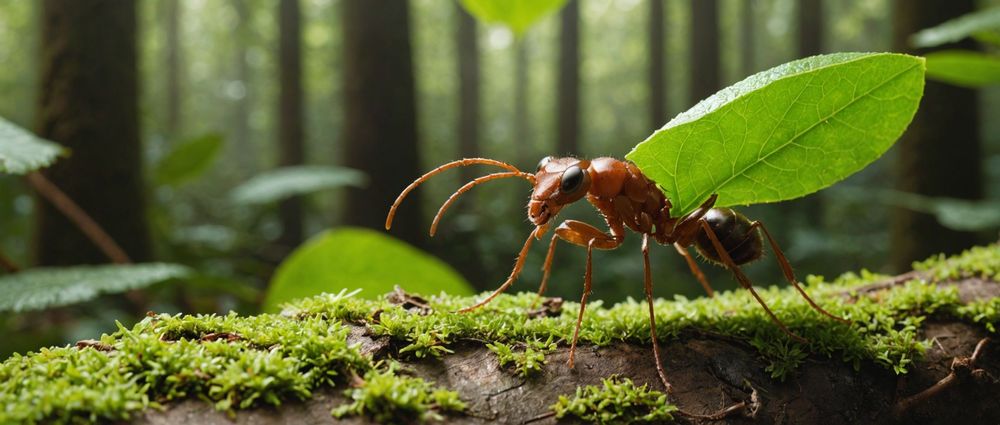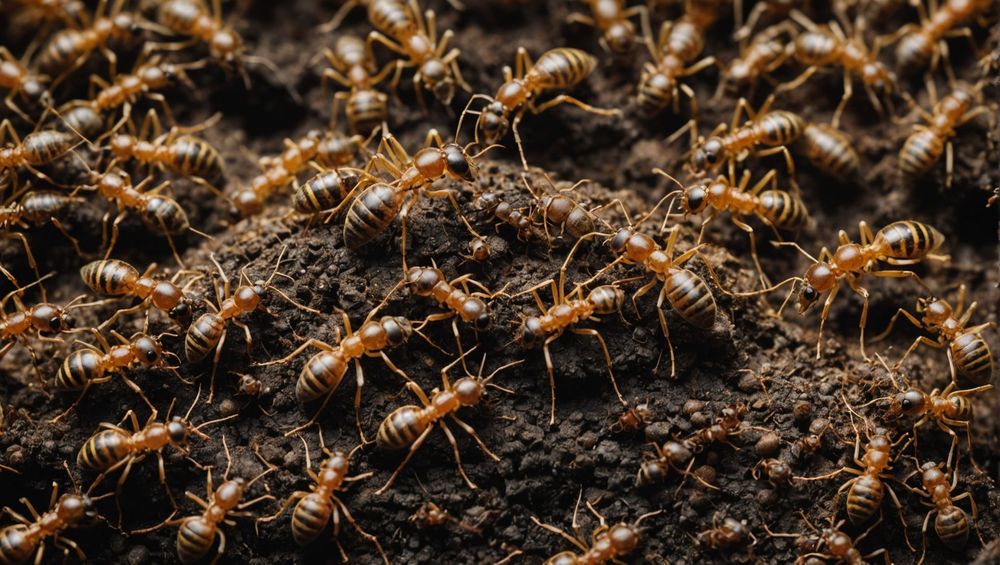Ants are fascinating creatures that display remarkable behaviors and traits not commonly known to the average person. These tiny insects, which number in the trillions on Earth, exhibit a variety of unique characteristics that contribute to their success as a species. From their complex social systems and communication methods to their impressive strength and even agricultural practices, ants are much more than just garden pests. In this article, we will explore some intriguing facts about ants, unveiling the aspects of their lives that you may not have heard of before.
1. Ants Have Their Own Form of Agriculture

One of the most interesting facts about ants is their agricultural capabilities, which mirror human practices in some ways. Certain species of ants, especially leafcutter ants, engage in systematic farming. They cut leaves and bring them back to their colonies, where the leaves are used to cultivate a special type of fungus that serves as their primary food source. This relationship showcases a complex form of mutualism where both the ants and the fungus benefit from each other’s presence.
Here are some essential details about ant agriculture:
- Leaf Collection: Leafcutter ants meticulously select and cut leaves, which they bring back to their nests.
- Fungus Cultivation: The leaves are not eaten directly; instead, they are used to grow a specific fungus that the ants consume.
- Waste Management: Ants even manage their waste carefully to avoid contaminating the fungus, demonstrating sophisticated understanding.
- Significant Labor Division: There is a clear division of labor among workers, soldiers, and foragers within the ant colony.
- Adaptation: Some species have even adapted their farming techniques based on environmental changes, showcasing their resilience.
2. Ants Communicate in Surprising Ways

Ants are social insects that rely heavily on communication for colony success. Unlike humans who predominantly use vocal sounds or body language, ants utilize a range of pheromones, which are chemical signals that convey information. These pheromones can indicate a diversity of messages, including the location of food, warnings about danger, or the identification of other ants.
Furthermore, ants also engage in a technique called “tandem running.” This method involves one ant leading another to a food source, physically guiding it while communicating essential cues along the way. This combination of chemical signals and physical interactions highlights the intricate social dynamics of ant life, showcasing their adaptability and intelligence.
3. Ants Are Incredible Builders
Structurally, some ant species are known for their impressive engineering skills. The architecture of ant colonies is not only complex but also astonishingly efficient. Ants build their nests underground, where they create vast networks of tunnels and chambers. These nests can vary greatly in size and structure, depending on the ant species and environmental factors.
Some of the amazing engineering feats include:
- Chambers: Ants create specialized chambers for nurseries, food storage, and even fungus cultivation.
- Ventilation Systems: The tunnels and chambers often feature intricate ventilation systems that regulate airflow and moisture levels.
- Protection: Many nests are designed for defense against predators, showcasing their protective instincts.
- Temperature Control: Ants manipulate tunnel orientation to regulate internal temperature, ensuring it remains stable for their needs.
4. Incredible Strength and Resilience
It might surprise you to learn that ants are incredibly strong for their size. Some species can lift objects that are up to 50 times their body weight! This strength comes from their unique body structure and muscle arrangement, allowing them to perform tasks far beyond what one might expect from such small creatures.
Ants are also resilient: they can survive under extreme conditions. For instance, certain species are known to survive flooding by forming rafts with their bodies, ensuring the survival of their colony. This ability to adapt and endure harsh environments is a testament to their evolutionary success, allowing them to thrive in diverse habitats across the globe.
5. The Ant Queen’s Lifespan
When it comes to ant colonies, the queen ant plays a crucial role and boasts an impressive lifespan. Depending on the species, a queen can live for several years, even up to three decades in some cases! This longevity is significantly longer than worker ants, which typically live just a few months to a year at most. The queen’s primary function is reproduction, laying thousands of eggs throughout her lifetime to ensure the survival of the colony.
Interestingly, the queen is nurtured and protected by worker ants, who attend to her needs entirely. This hierarchical structure is essential for the colony’s growth and sustainability, establishing a balance between generations within ant societies.
Conclusion
Ants embody a world of fascinating traits and behaviours that demonstrate their complex roles in nature. From their agricultural practices and unique communication methods to their exceptional strength and intricate colonies, ants are more than just simple insects. Their adaptability, resilience, and social structures serve as powerful reminders of the wonders of the natural world. As we continue to study these tiny giants, there’s no telling what new insights we might discover about their lives and environments in the future.
FAQ
1. How many species of ants are there?
There are over 12,000 known species of ants, with estimates suggesting that there could be as many as 20,000 species worldwide.
2. Can ants recognize different members of their colony?
Yes, ants can recognize each other through pheromones and unique species-specific chemical signatures, which help them differentiate between colony members and outsiders.
3. Why do ants form large colonies?
Ants form large colonies as a survival strategy. Working together allows them to efficiently gather food, care for their young, and defend against predators, increasing their chances of survival.
4. Do ants sleep?
Ants do not sleep in the same way humans do, but they do have periods of rest. Some studies suggest ants go through short cycles of inactivity, which could be considered a form of light sleep.
5. What do ants eat?
Ants are omnivorous; their diet varies based on species. They generally feed on plant material, nectar, seeds, fungi, and even small insects. Some ant species also gather honeydew produced by aphids.
